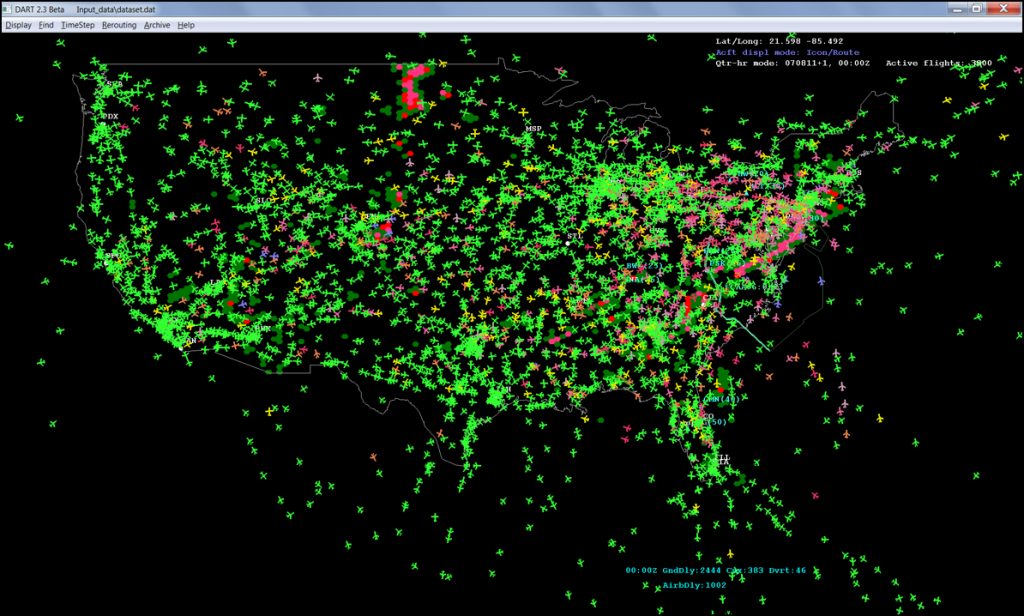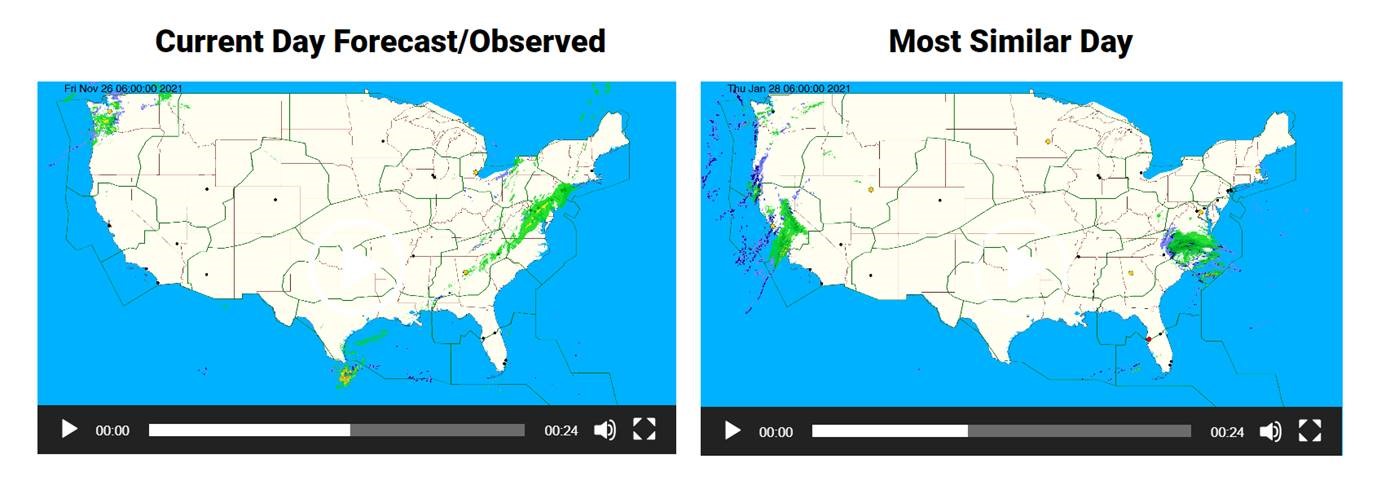AvMet collects and archives vast amounts of weather/forecast, air traffic, and air traffic management advisory data on a daily basis. Leveraging our in-house weather-to-impact translation techniques and software, we import operationally-relevant data into our fast-time simulation tools to explore potential “what-if” scenarios. This helps identify opportunities, best practices, and lessons learned when managing weather constraints on air traffic, which in turn leads to more efficient operations. We accomplish this through AvMet’s expert awareness and accountability for:

If you need answers on how your fleet will perform on any given weather day, DART can simulate any scenario for any given weather scenario of operating in the NAS. DART can process a highly complex day-in-the-NAS scenario with 50,000 flights, major airports, their runways, weather-dependent runway relationships, departure/arrival procedures, hundreds of sectors, weather, reroutes, aircraft sequencing, spacing, delays, cancellations, and a multitude of Traffic Management Initiatives (TMIs) in two minutes on a standard PC.
To find out more specifics regarding DART, click here.


Compare a weather forecast and learn what impact a similar weather day had; SWAT identifies similar convective and non-convective weather events going back 30 years and provides resulting operational impacts in the NAS.
Supporting both pre- and post-operations analysis where we score the impact of weather on airports and airspace against the historical baseline.
